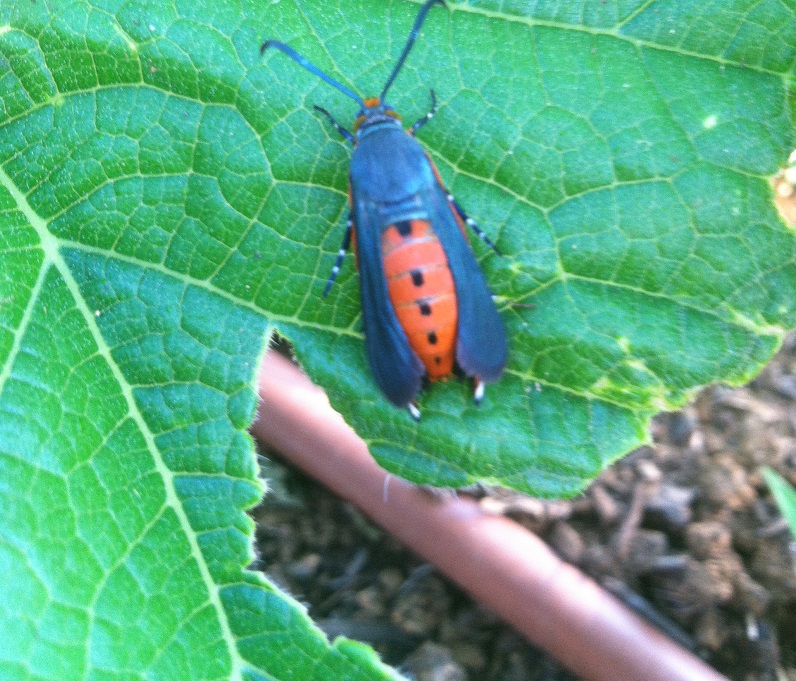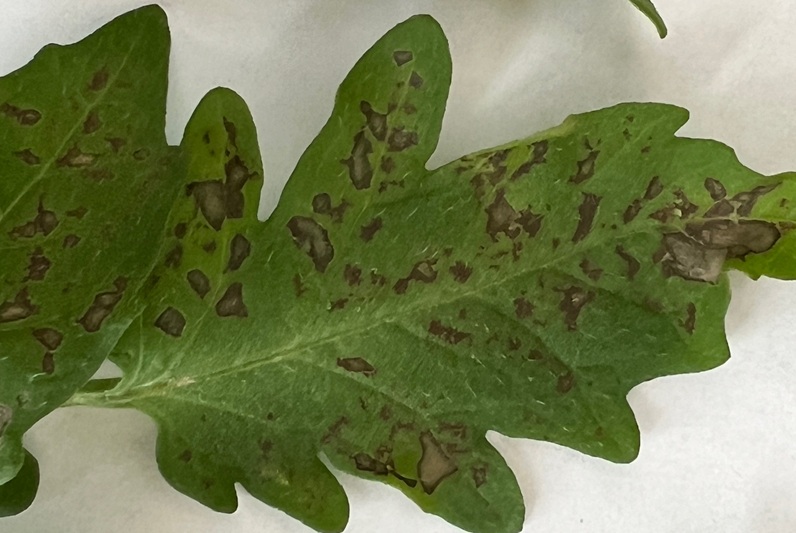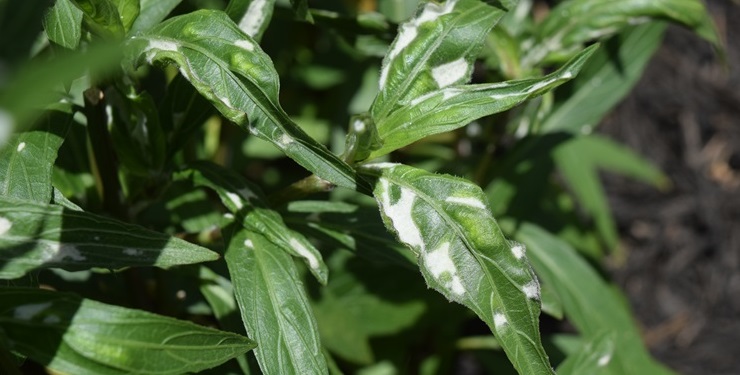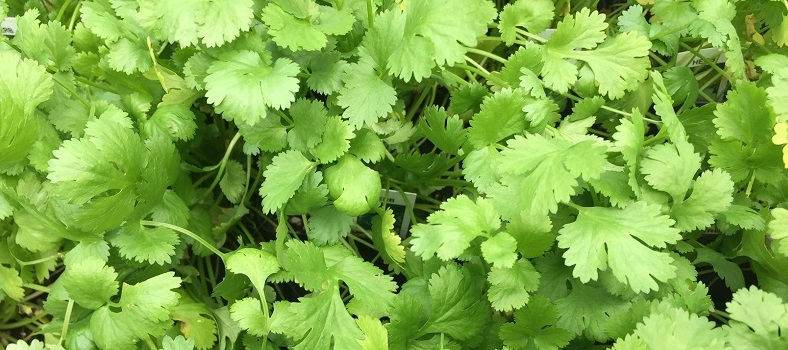
I don’t know about you, but I consider squash vine borers to be one of my garden’s worst enemies! Just when my squash vines are beginning to produce well, they suddenly go limp and die!
Luckily, there IS something we can do to prevent or minimize the damage from this pesky insect. Understanding the life cycle of any pest is key to its management.
Are all Cucurbits susceptible?
There are some cucurbits that may not be affected. These include butternut squash, Tatume squash, white bush scallop squash, summer crookneck squash, cucumbers, melons and watermelons.
What is the life cycle of the Squash Vine Borer (SVB)?
The squash vine borer overwinters as a pupa about 2″ deep in the soil. The adult emerges in April/May in Central Texas, and within about 3 days lays an egg at the base of the squash plant. The egg hatches in about a week and the larva bores into the squash stem to feed for about four weeks. When the larva is mature at about 4-6 weeks, it leaves the plant and bores into the soil about 1″ deep where it will pupate. One to two overlapping generations per year are possible, making insect activity possible through the summer into fall.
What can be done to break up the life cycle?
CLEAN UP, CLEAN UP, CLEAN UP!
Remove any infected plants immediately and destroy them. These don’t go to the compost bin!
ROTATION, ROTATION, ROTATION!
If you garden is large enough to practice crop rotation, planting a non-cucurbit crop for one to two years in a location before planting another cucurbit in that area will help to break up the life cycle by not having host plants available for any overwintering SVB. Skipping a year of growing susceptible crops is also an option.
TILL, TILL, TILL!
Turning the soil in the fall will expose any overwintering pupae to birds and to the elements. Most are in the top two inches of the soil, so turning soil to expose them shouldn’t be too difficult.
BENEFICIAL NEMATODES
Beneficial nematodes are known to feed on larvae of SVB. Application may be made to the soil, sprayed on the plant or injected into the stem. There is not much information out there regarding control, but it is earth-friendly and worth a try, right?
How do you identify when Squash Vine Borer adults appear?
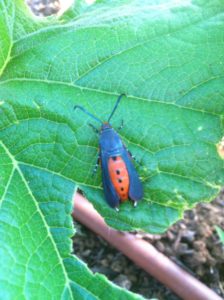
The squash vine borer adult is a small wasp-like “clear-wing” moth with a reddish-orange abdomen. The adult moths emerge from their pupating stage in the soil in April to May in Central Texas, coinciding with the emergence of squash seedlings. You should be watching for these distinctive black and orange clear wing moths (that actually look like wasps) in April to May in Central Texas. They are easily detected, as they make a loud buzzing sound and fly low to the ground.
Some people will set a trap for them in the garden. Use a yellow container and fill it with water. Add a couple drops of dish soap to break the surface tension of the water. The adult moth will be attracted to the yellow color, we hope.
How do you prevent the larva from entering the vine?
Scouting daily for the egg which is usually laid on the first few inches of stem would be the first line of defense. Squish it if you find it. This works if you are in your garden daily and don’t have too many plants!
While Bt (Bacillus thuringiensis) is often used as a control for SVB, either by spraying the stems or actually injecting it into the stems, it degrades quickly in sunlight and has little residual control. But it is worth a try!
Spinosad, another organically derived insecticide, has a longer residual activity than Bt and can be sprayed on the stems of the vines weekly as a control for larvae entering the stems. Spray this product at night after the bees have gone to bed, as it is toxic to bees when wet. Follow label directions exactly. Avoid spraying flowers if possible.
Exclusion is another method for controlling SVB. Placing a row cover of .5 ounce N-sulate fabric over the plants when the adult SVB are active works well, but the cover should be removed after about two weeks so bees can pollinate the flowers. Be sure to anchor the row cover to the ground to prevent the adult moth from entering. If this area has been used for squash production before, there is a risk that any adults emerging from the soil will be trapped under the row cover. Hand pollination may be used when row cover is left on longer.
Chemical control is an option as well, with several low-toxicity insecticides labelled for use on cucurbits for SVB. Stems should be sprayed at night according to label directions to avoid harming bees. Always consult the label for both the plant to be sprayed and the insect to be controlled as well as how many “days to harvest” to wait after application.
What can you do if the larva enters the vine?

If your vines suddenly wilt, then you probably have squash vine borers. Inspect the stems daily for sawdust-like material called frass which are worm droppings mixed with some plant matter.
Once wilting is noticed you can try to kill the borer inside the vine. Use a sharp knife to slit the stem lengthwise. Remove and kill the borer when found. Your chickens will love them! Mound moist soil over the stem to encourage roots to grow, keeping soil moist for a while.
You can also pile soil every 2 feet or so on the stems as they grow. This will encourage rooting at places on the stem, so that if the borer gets in the stem the plant may still have a chance to grow.
As you can see, Squash Vine Borers are not the easiest to control. Some gardeners will plant successive plantings so that if one crop is affected the one following it may not be. While there is no easy answer to controlling this pest, we do have options. Visiting the garden daily is well worth it when it comes to scouting for insects and disease.

